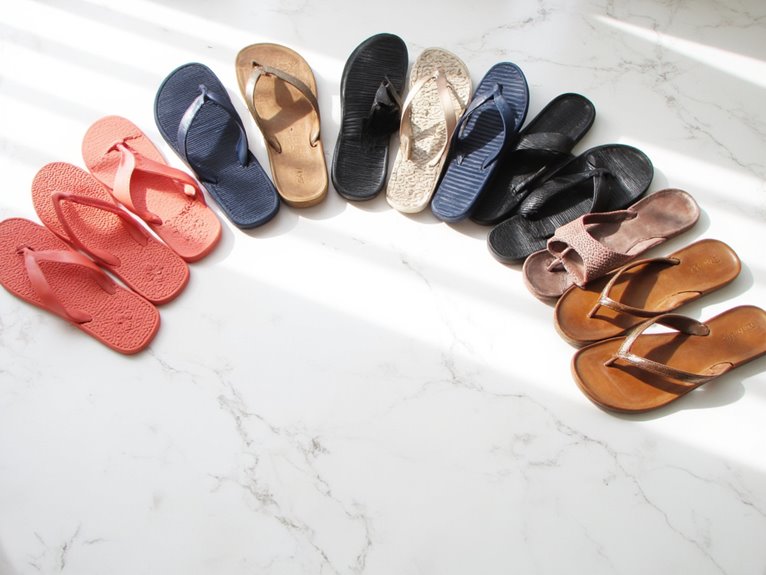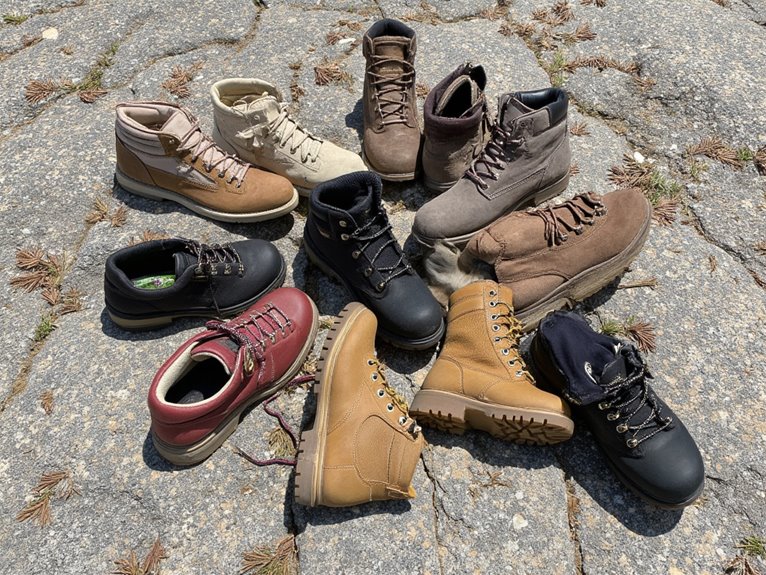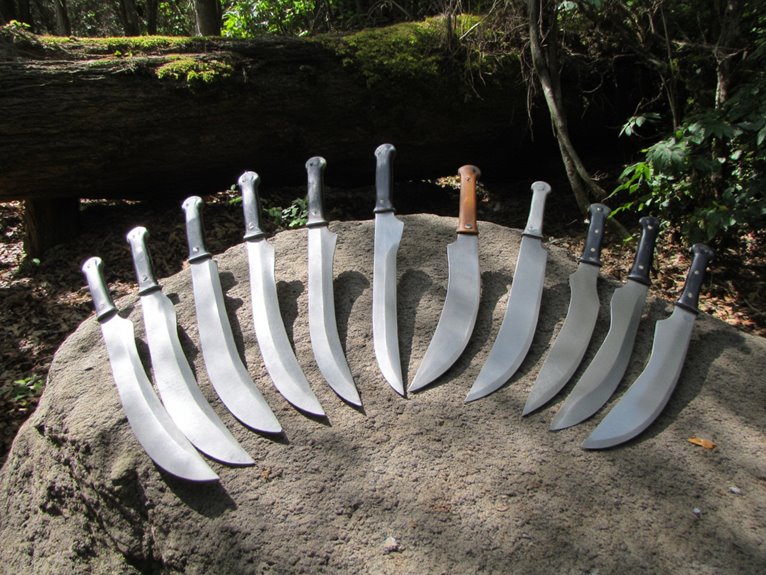How to Make a Backpack Feel Lighter?
To make a backpack feel lighter, prioritize packing essential items only, and strategically organize your gear to minimize bulk and maximize accessibility. Choose a backpack with a comfortable, ergonomic design that distributes weight evenly across your back and shoulders. Compression bags can help compress clothing and gear, freeing up valuable space. Consider wearing your heaviest items, like a coat or boots, to reduce the load. Pack heavy items at the bottom and closer to your back, and keep frequently used items within easy reach. By implementing these strategies, you'll be able to carry your pack with greater ease and comfort, and discover even more ways to lighten your load.
We are supported by our audience. When you purchase through links on our site, we may earn an affiliate commission, at no extra cost for you. Learn more. Last update on 18th December 2025 / Images from Amazon Product Advertising API.
Pack Essentials Only Always
Only the bare essentials should make the cut into your backpack, as every unnecessary item adds weight, bulk, and distraction from your journey's true purpose.
When packing, prioritize items that serve multiple purposes or provide critical functionality.
A first-aid kit, water bottle, and extra clothing are must-haves, while luxuries like hair dryers or extra shoes can be left behind.
Consider the length and type of trip, as well as the climate and terrain, to determine what essentials to bring.
By streamlining your packing list, you'll reduce fatigue, increase mobility, and focus on the journey ahead.
Choose the Right Backpack
With a carefully curated packing list in hand, it's time to select a backpack that can comfortably and efficiently carry your gear.
When choosing the right backpack, consider the weight and material of the pack itself. Look for lightweight yet durable materials, such as nylon or polyester, and avoid heavy or bulky frames.
Additionally, consider the pack's suspension system, which should distribute weight evenly across your back and shoulders.
A well-fitting backpack with padded shoulder straps and a hip belt can make a significant difference in comfort and weight distribution.
Distribute Weight Evenly Inside
How can you guarantee that your backpack's weight is evenly distributed, alleviating strain on your back and shoulders?
By strategically packing your gear, you can facilitate a comfortable and balanced load.
Start by placing heavier items, such as camping gear or laptops, at the bottom of the pack and closer to your back.
This will provide stability and keep the weight centered.
Next, distribute smaller items, like clothing and snacks, evenly throughout the pack to maintain balance.
Avoid overloading one side or corner, as this can cause strain and discomfort.
Use Compression Bags Wisely
By leveraging compression bags wisely, the key is to maximize their potential without compromising the organization and accessibility of your gear.
By adopting a few simple strategies, you can optimize the use of compression bags to make packing easier, save precious space, and guarantee that your clothes remain neatly rolled and organized.
Packing Made Easy
By strategically incorporating compression bags into your packing routine, you can substantially reduce the bulk of your gear and create a more organized, lightweight backpack.
Compression bags compress your clothing and gear, freeing up valuable space in your backpack.
This allows you to pack more efficiently, making the most of your backpack's capacity.
Additionally, compression bags help keep your gear dry and protected from the elements.
By using compression bags, you can easily identify what's inside without having to rummage through your entire backpack.
This streamlined packing approach makes it easier to find what you need quickly, saving you time and energy on the go.
Roll Clothes Tight
To maximize the space-saving benefits of compression bags, roll your clothes tightly before packing them, as this helps to eliminate air pockets and allows for a more efficient compression.
This simple technique guarantees that your clothing takes up minimal space, making it easier to pack and reducing the overall weight of your backpack.
When rolling, start with the sleeves or legs of the garment and work your way up, applying gentle pressure to remove any wrinkles or creases.
This will help to prevent bulkiness and allow for a smoother compression process.
Save Precious Space
Compression bags are most effective when used strategically, as they can substantially reduce the volume of clothing and other items, freeing up precious space in your backpack for more critical gear.
By compressing items like socks, underwear, and jackets, you can fit more essentials into your backpack.
However, it's essential to use compression bags wisely. Over-compression can lead to damaged or creased clothing, so be mindful of the pressure you apply.
Additionally, reserve compression bags for items that can withstand pressure, such as clothing and sleeping bags, and avoid using them for fragile or bulky items.
Wear Your Heaviest Items
Carrying heaviest items like hiking boots, water bottles, or climbing gear on your body instead of in your backpack can substantially reduce the overall weight and strain on your back.
This simple trick can make a significant difference in the comfort and manageability of your pack.
By wearing your heaviest items, you can:
Distribute the weight more evenly, reducing the strain on your back and shoulders.
Free up space in your backpack for other essential items.
Improve your overall balance and stability, making it easier to navigate challenging terrain.
Pack Heavy Items at Bottom
Packing heavy items at the bottom of your backpack is a vital step in achieving a balanced and comfortable load.
By doing so, you can distribute the weight of your gear more evenly, reducing fatigue and discomfort.
This strategic approach also enables you to protect fragile items by placing them in a safe and secure position within the pack.
Balance Heavy and Light
Proper weight distribution is critical to achieving a comfortable and stable backpack, and strategically placing heavy items at the bottom of the pack is essential to maintaining this balance.
This approach allows the weight to be evenly distributed, preventing the pack from tipping forward or sideways.
To achieve ideal balance, follow these guidelines:
- Heavy items at the bottom: Place heavy items such as laptops, tools, or camping gear at the bottom of the pack to create a stable base.
- Lighter items at the top: Position lighter items like clothes, snacks, or accessories towards the top of the pack to maintain a comfortable and balanced load.
- Medium-weight items in between: Place medium-weight items like books, water bottles, or cooking gear in the middle of the pack to maintain a smooth weight distribution.
Distribute Weight Evenly
Every well-organized backpack begins with a solid foundation, which is why placing heavy items at the bottom of the pack is essential for distributing weight evenly.
This strategy guarantees that the weight of your gear is balanced, reducing the strain on your back and shoulders.
By packing heavy items such as laptops, tools, or camping gear at the bottom, you create a stable base that prevents the pack from shifting uncomfortably during wear.
This also helps to maintain a lower center of gravity, making the pack feel more stable and secure.
Protect Fragile Items
By positioning fragile items, such as electronics or glassware, in the middle or top sections of the backpack, you can effectively shield them from damage caused by the heavier items at the bottom. This simple strategy helps prevent breakage and safeguards your valuables remain intact throughout your journey.
When packing, consider the following:
- Wrap fragile items in clothing: Use soft fabrics to cushion your fragile items, reducing the impact of shocks and bumps.
- Use protective cases: Store fragile items in dedicated cases or pouches to provide an extra layer of protection.
- Avoid overstuffing: Leave sufficient space between items to prevent scratching or crushing.
Keep Frequently Used Items Accessible
One of the most effective ways to streamline your backpack is to store frequently used items in easily accessible pockets or compartments.
This simple trick can make a significant difference in reducing the perceived weight of your backpack.
By keeping essential items, such as your phone, wallet, and snacks, within easy reach, you'll avoid having to dig through your entire pack every time you need something.
This will not only save you time and energy but also reduce the strain on your back and shoulders.
Consider designating specific pockets or compartments for specific items to maintain organization and make the most of this strategy.
Take Breaks to Rest Your Back
Carrying a heavy backpack for extended periods can lead to fatigue, discomfort, and even injury, making regular breaks to rest your back an essential part of any journey.
Taking breaks allows your back to recover and recharge, reducing the risk of strain and injury.
- Stretch it out: Take a few minutes to stretch your back, shoulders, and legs to loosen up tight muscles.
- Shift the load: Adjust the weight distribution of your backpack to alleviate pressure points and ease discomfort.
- Take a seat: Find a comfortable spot to sit and rest your back, giving your muscles a much-needed break.
Consider a Backpack With Wheels
Mobility and comfort can be substantially improved by considering a backpack with wheels, which can greatly reduce the physical strain associated with traditional backpacks.
This innovative design allows for effortless transportation, especially over long distances or on smooth surfaces. Wheeled backpacks are ideal for travelers, students, and outdoor enthusiasts who need to transport heavy loads.
Look for a sturdy, high-quality wheel system that can withstand various terrains and weights. Additionally, consider the backpack's weight distribution, ensuring that the wheels are strategically placed to minimize strain on your back and shoulders.



